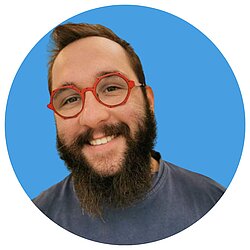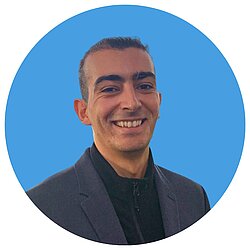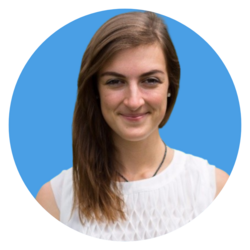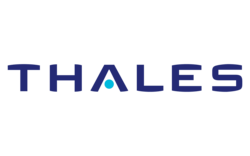International Engineering Cycle
AN INTERNATIONAL COURSE WITH A DOUBLE DEGREE, EVEN FOR APPRENTICESHIPS
ESTIA offers students a dual degree course with a partner university in France or abroad, compatible with in-company apprenticeships.
BECOMING AN ESTIA ENGINEER THROUGH AN APPRENTICESHIP
Students who choose to do an apprenticeship at ESTIA benefit from the same dual degree programme without extending their studies. At the end of their course, in addition to the ESTIA engineering diploma, they obtain a second European Master's diploma or a recognised professional qualification.
This apprenticeship programme is one of the distinctive features of ESTIA's teaching model, as it enables all students to enrich their experience and add real value to their CVs.
- The companies hosting the apprenticeship students are true partners of the student and of the school, which assigns a dedicated tutor to the student.
- Both the company and the school work together to ensure that the student receives the knowledge and develops all the skills required to become an ESTIA engineer, with the same programme and an adapted timetable.
- Apprentices have access to all the options and career choices offered by the school.
- Assignment of a school tutor
- Apprenticeship students contribute €4,900 per year towards the costs of this optional course, which is complementary to the ESTIA engineering degree.
- This amounts to a total of €14,700 over the 3 years, instead of €21,300 for the standard course. At the same time, the student receives remuneration based on an agreed scale linked to his or her age and level of study.
- These costs, which are borne by the student, may be covered by the company if the latter agrees. In this case, a training agreement (complementary to the apprenticeship training contract) is drawn up between ESTIA and the company, and the invoice is sent to the company and not to the student.
THE 3-YEAR DOUBLE DIPLOMA - Student testimonials
Could you tell us more about your career since joining Estia?
Following a CPGE PTSI-PT, I joined ESTIA first as an initial student and then as an apprentice from July at the end of my first year.
I continued my studies as an apprentice at Safran Helicopter Engines in Tarnos, working on engine technical support. At the end of my studies at ESTIA, I was offered a VIE opportunity with the same company in the USA, on the outskirts of Dallas, TX. I now work on the industrialisation of the engine maintenance process.
What was the advantage for you of preparing a double degree / Why is it an opportunity to prepare two degrees in 3 years?
There are two main advantages for me: firstly, ESTIA's generalist training, which provides us with an extremely wide range of subjects. This means that you're not restricted to one role, and that you have notions and a global vision of all the stakeholders in a multi-disciplinary project. Then there's the dual degree course (Mechanics, for my part, with the PROVE pathway), which allows you to delve deeper into your chosen field.
Do you think that this dual career path has helped you to take up these positions?
I think that my dual degree really helps me on a day-to-day basis: I work on the repair of engine parts, so I have a strong mechanical component. However, I also work with HTML programming software, something that a purely mechanical engineer would probably have been more reluctant to do. ESTIA's dual career path gives you a dual perspective on the same subject, whether specialised or more global, depending on the context.
What advice would you give to a future student who is hesitating whether to choose a school offering a single degree or Estia and its dual pathway?
Depending on the maturity of the professional project, the answer would be different: if they are 1000% sure of what they want to do, and also sure that they only want to work in this specific field, why not take the single degree. However, the final job at the end of the course is rarely the ideal job dreamt of at the start. The advantage of ESTIA is that you can find out more about the different areas of engineering practice before you make a choice, and also after you have made that choice to have a much more developed professional culture. This makes it possible to work in both cross-disciplinary and specialist fields. Finally, ESTIA is an incredible environment for developing personal, entrepreneurial or community projects, all in a dream setting.
Can you tell us more about your career since joining Estia?
I did a DUT in Measurement Physics at the IUT in Annecy and then went on to do an ATS preparatory class which enabled me to enter ESTIA on the basis of a competitive entrance exam.
I think that the first year was the most difficult because the school was 900km from my home (Grenoble) and then because the whole year was spent at a distance because of the confinement. So I was confined to my 19m² Erleak flat in Bidart.
As soon as the first year started (September 2020), I wanted to get ahead of the game and apply directly to several companies for my 2-month placement in February 2021. I finally managed to get an unsolicited application for an internship at the Grenoble Institute of Planetology and Astrophysics (IPAG) on the subject of "Scenario study for the RIME radar on the JUICE mission" for an ESA space mission around the moons of Jupiter. The course also took place remotely, but it went so well that IPAG offered me a second placement with them.
As soon as I entered ESTIA in 1st year, my objective was to do my double degree in aerospace with Cranfield University. The second year was therefore decisive, as I had to validate my languages and my grades in order to get into Cranfield. I managed to pass my TOEIC test and came 2nd in my year by over-achieving on a number of tests and projects, so I was accepted at Cranfield. At the same time, I designed an experimental rocket with several schools and the CNES (FUSEX project), which successfully flew in July 2022. Thanks to our work, ESTIA is now considered a University Space Centre by CNES. I was also in charge of the astronomy centre with the Esti'Aéro association, where we invested in a telescope and started a partnership with the Basque Coast Astronomy Society (SAPCB). We also organised a cinema screening of the film about Thomas Pesquet and the visit of a French astronaut (Jean-Jacques Favier).
My second placement was also with IPAG on a mission around an asteroid. This was a four-month placement on "Radar tomography and mission analysis of the Apophis asteroid" in conjunction with CNES and JPL NASA.
Alongside all this, in April I started applying for two Excellence Awards:
The ESPACE 2022 grant from the Ailes de France foundation with CNES, Eutelsat, Safran, Thalès, ESA and many other partners from the space sector.
The Vocation Prize from the Fondation de la Vocation to help young people fulfil their vocation.
After a long and highly selective process, I won the two Prix d'Excellence and joined the Vocation and Ailes de France family.
In my third year, I began my studies by going to Cranfield for 5 weeks for my double degree in the Master of Science in Computational Software Techniques in Engineering option CED (Computational Engineering Design). After that, I'm looking for a final year placement abroad, the ACT IN SPACE scheduled for 18 November and the 24h of aeronautical innovation on 24 November.
What was the advantage for you of preparing a double degree / Why is it an opportunity to prepare two degrees in 3 years?
During my preparatory classes, I wasn't sure whether to go straight into a speciality (mechanics school) or a general school. I absolutely wanted to work in aerospace, so I wanted to specialise, but I was a bit afraid of closing doors if I went to a school specialising in mechanics.
The perfect solution was to have a generalist school with a speciality in the field that I liked, and ESTIA was one of the only ones to do that, and what's more with Cranfield University, which is recognised worldwide in the aerospace field.
Do you think that this dual career path helped you to win these prizes/scholarships?
There's no doubt about it, the prizes I applied for are designed to help young people achieve their dreams. In my case, I had already achieved something with the FUSEX project and the double degree I was going to do at Cranfield, so I already had a foot in the door (and thanks to my work placements).
In layman's terms, the Jury was expecting to hear something like "I'd like to work in aerospace and, if possible, join Cranfield..." and thanks to my background I was able to say "I'm already working in aerospace with the FUSEX project, and I'm going to join Cranfield in September for a double degree"
That helped me a lot and proved my commitment and passion for this field.
What advice would you give to a future student who is hesitating about whether to choose a school offering a single degree or Estia and its dual pathway?
In my case and for many of my colleagues, the most important thing was the result: how many diplomas, how much you'll be paid, how many doors will close, how many will open, how many lines on your CV, etc. In the end, with ESTIA and the double degree, no door is closed and if you work with passion and get really involved in your course, other doors will open with opportunities that you wouldn't even have imagined. It's often said that to choose is to give up, but with ESTIA and its double degree, you choose without giving up (you only give up on other double degrees, I admit...).
Can you tell us more about your career since joining Estia?
After my final year as a full-time student at Cranfield University, I did a six-month placement at SAFRAN Aircraft Engines in the Paris region. This position in a design office working on the Rafale engine enabled me to validate both my work placement and my Master's thesis subject for Cranfield.
I then worked in another SAFRAN entity (SAFRAN Aerosystems Services) as a Marketing Analyst and then as a Product Manager. I was in charge of after-sales strategy, budgets, training for sales staff, and so was the focal point for Oxygen products used on all types of aircraft and helicopters, both civil and military.
Today, I'm based in Munich, Germany, and work as a Product Manager at Infineon Technologies AG, a semiconductor company.
What were the advantages for you of doing a double degree / Why was it an opportunity to do two degrees in 3 years?
There were many advantages for me:
-Valuing my engineering degree with that of another nationality (it's good to know that many companies value this aspect on leaving school, and some also value it financially in the calculation of the salary on recruitment);
-The opportunity to discover a different way of teaching (more autonomous learning with lots of IT projects to do at home, very fast-paced: like going back to classe prépa!)
-The opportunity to live in a foreign country, and thus open up to a new culture;
-Being at a new university, meeting students of different nationalities and with different backgrounds, and developing your network.
Do you think that this dual background helped you to win these prizes/scholarships?
For my part, I'd say yes, it has boosted my career, even in France. In fact, Cranfield is a school with a great reputation in the aeronautical world, and this was recognised in my search for a work placement as well as for my first job.
What advice would you give to a future student who is hesitating about whether to choose a school offering a single degree or Estia and its dual curriculum?
I think that ESTIA's double degree course is a real advantage, but it's not ESTIA's only added value. The quality of the courses received, the motivation and creativity of the teachers, the possibility of spending a semester abroad in the second year, the diversity of the teaching, the close links with companies in the region and the possibility of having an entrepreneurial career, I would say that all of this should be taken into account when choosing to spend three wonderful years at ESTIA!
THE 3-YEAR DOUBLE DIPLOMA - Company testimonials
"At Thales RCS, we design car park equipment (entry and exit terminals, automatic pay stations ....). Thomas worked on improving the ergonomics of a car park pay station by imagining the ticket validation function. Thanks to his dual engineering/ergonomics skills, Thomas meets a major need among our engineers in the design of products for human use. The skills he demonstrated during his apprenticeship convinced us that we had to recruit him
Nicolas Bascazeaux - Continuous Improvement Manager - B BRAUN MEDICAL
"We recruited Kenan as an apprentice in our department and he spent 3 years on operational excellence projects. In particular, he did a very good job in digitising our processes. I think the opportunity to do a2nd degree in Industrial Engineering (Master STRATO in Bilbao) made it easier for him to understand our business and the constraints of the medical sector. That's an undeniable plus.

Honoré Garcia - Chairman of CERTIM
"CERTIM is an engineering and design office for mechanical assemblies, in particular industrial production lines. Maxime has a dual skill set that we're interested in in his role as business manager. He has both the know-how of an engineer and that of a salesman, as he has also completed the EIBS course (Masters in International Business Management)."





